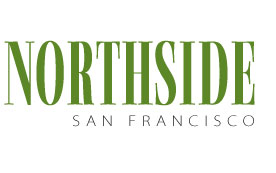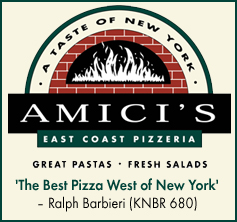 |
 |
|||||||
|
The nifty cat scratches my itch By Ernest Beyl
My esteemed editor thought it would be a good idea if I “branded” my Northside San Francisco scribblings with a title like my buddy Bruce and his column “Bellingham by the Bay.” I thought so too, so this first branded offering is under the title, “Appetites and Afterthoughts.” I think it has a nice ring to it.
“Appetites” conveys the many things I like to write about: jazz, food, wine, cooks and cookbooks, art, architecture, and fly-fishing. “Afterthoughts” acknowledges my bent for San Francisco history, the North Beach neighborhood and its characters, stories and anecdotes about the good old days and the good old places. In this first column, I’d like to tell you about the “nifty cat” Roy Eldridge, my favorite jazz trumpet artist and one of the key instrumentalists in the jazz history of the trumpet. In 1966, in an almost accidental fashion, I produced a record album in San Francisco with the great Roy Eldridge. It was called – yes, The Nifty Cat Strikes West. Ah, 1966. Those were the days. I was so immersed in jazz that it no longer satisfied me just to sit in smoky nightclubs like the Jazz Workshop in North Beach, open my ears and snap my fingers on the second and fourth beats. I was itchy to be involved, itchy to be part of the jazz scene. The Nifty Cat Strikes West – I still have a copy of the 33 r.p.m. LP – is an example of scratching that itch. Here’s how it happened. Big bands and the movie palaces Krupa at the Golden Gate When the movie was over, I sat expectantly in the dark for a few minutes. Suddenly a spotlight shot a large illuminated circle on the closed, red velvet curtain. Then, softly at first, I heard the boom of the bass drum, then tom toms, then loud cymbals, snare drum rolls, and the snap of rim shots – all of this before the curtain parted. Finally, it swung back to reveal the band. Harsh, bright reflections glanced off the brass instruments. Hooked by gritty Eldridge When the show was over, I walked around to the stage door where the musicians actually came out into the daylight, right into the real air. My archangel Gabriel walked out, signed an autograph for me, and made a few off-hand, reasonably pleasant comments. He wasn’t exactly warm and cuddly – jazz musicians just aren’t. Then he walked up the street and into Original Joe’s. Even a gritty archangel like Roy Eldridge must eat. Krupa busted in San Francisco The next day San Francisco newspapers reported that Krupa had been arrested for contributing to the delinquency of a minor and possession. The story said Krupa had asked his underage valet and gofer to retrieve an envelope of some mysterious substance from his St. Francis Hotel room. Roy Eldridge and Count Basie At the time, Eldridge was playing with Count Basie and his Orchestra, touring the West Coast. After a week at Basin Street West in North Beach, Basie himself had taken off for the East, and a few of his key sidemen were hanging around San Francisco. Roy Eldridge Sextet Not knowing anything about producing a record album, I thought that was a long time. I discovered later that cutting a record sometimes takes as long as a year or more. But these jazz pros knew what they were doing. Motion was not wasted, nor was there time for a lot of small talk. They knew what they were there to accomplish, and they accomplished it in swinging order. Warming up with Ellington Jazz critics always cited Roy Eldridge’s “competitive nature.” Jazz artists can be competitive like professional athletes. They rejoice in what they term “cutting sessions” – trying to blow the other guys off the stage. It seems to go with the territory. That afternoon Eldridge, while full of camaraderie with his fellow Basie buddies, showed his competitive nature. After playing a slow, achingly beautiful and somewhat sardonic solo on “Willow Weep For Me,” he loosened up still more with a few belts from a bottle of bourbon on the floor next to his chair. Then, the incomparable timekeeper Bellson kicked it off with some chink a-chink a-chinks on his ride cymbal. Blue ’n’ Boogie sizzles The impresario strikes west Roy Eldridge died in 1989. He was 78. I still play The Nifty Cat Strikes West once in a awhile to rev up my engine. As I said, I had an itch and I scratched it. Ernest Beyl is going to enjoy his new column. And no he doesn’t want to sell The Nifty Cat Strikes West. E-mail: ernest@northsidesf.com |
||||||||
 |
||||||||
|
||||||||

  |
||||||||

